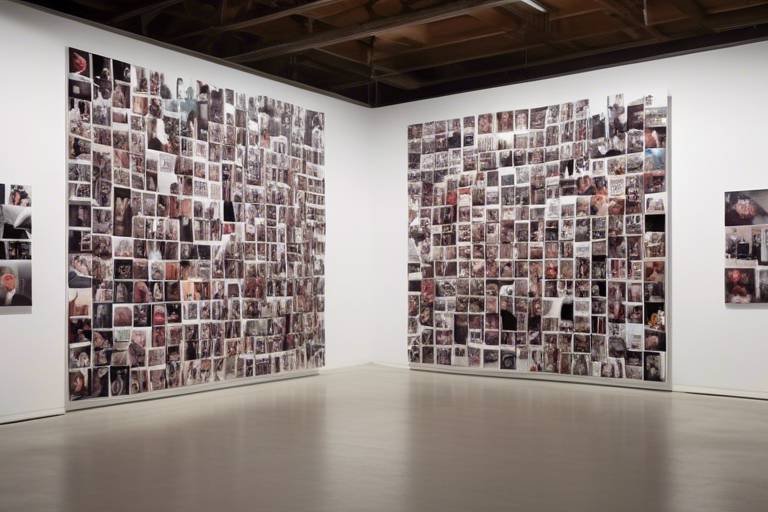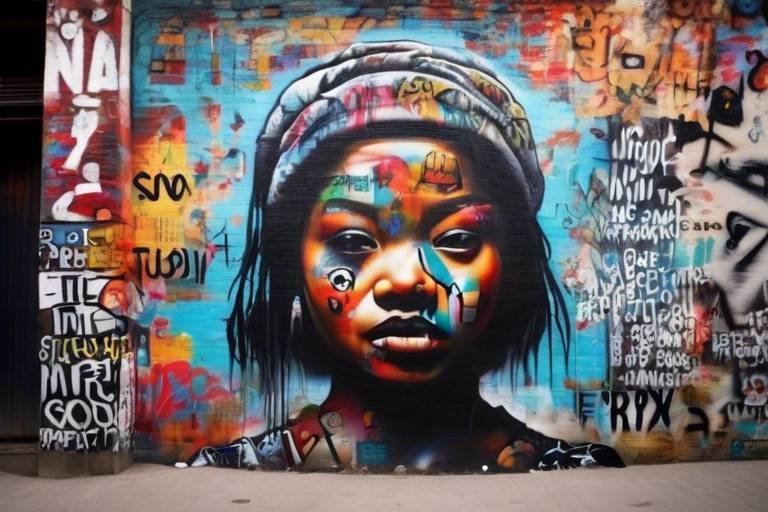The Artistic Contributions of the Ancient Mayans
The ancient Mayans left a remarkable legacy through their artistic contributions, showcasing a sophisticated understanding of aesthetics and cultural expression. Their artistic endeavors encompassed various forms, each offering unique insights into the rich tapestry of Mayan civilization.
Mayan architecture stands as a testament to their engineering prowess and religious devotion. The towering pyramids, intricate temples, and well-planned cities reflect not only their advanced construction techniques but also their deep spiritual beliefs and societal organization.
Delving into Mayan sculptures reveals a world of intricate carvings depicting deities, rulers, and mythological beings. These sculptures, crafted with meticulous detail, serve as visual narratives of Mayan culture, conveying stories of power, spirituality, and tradition.
The vibrant murals adorning Mayan ruins offer a glimpse into everyday life, rituals, and ceremonies of the ancient civilization. Through a riot of colors and intricate designs, these murals provide a window into Mayan society, offering clues about their social structure and artistic expression.
Deciphering the complex hieroglyphic writing system of the Mayans unveils a wealth of knowledge about their history, beliefs, and astronomical observations. These symbolic writings, etched in stone and codices, serve as a key to unlocking the mysteries of Mayan civilization.
Mayan pottery, with its vivid colors and symbolic motifs, served both practical and ceremonial purposes. The intricate techniques employed in pottery making reflect the Mayans' artistic sensibilities and cultural significance, with each piece telling a story of craftsmanship and tradition.
Exploring the world of Mayan textiles reveals a rich tradition of intricate weaving and vibrant natural dyes. The symbolic patterns woven into their fabrics not only showcased their cultural identity but also reflected the societal roles and beliefs of the Mayan people.
The exquisite jewelry crafted by the Mayans, adorned with gold, jade, and shells, symbolized status, power, and religious significance. These intricate ornaments, worn by nobles and elites, not only showcased their wealth but also served as markers of social standing and spiritual connection.
Body art among the Mayans, including tattooing, scarification, and body painting, served as expressions of cultural identity and connections to the spiritual realm. These practices, intricately woven into Mayan society, highlighted the significance of body adornment as a form of personal and cultural expression.

Mayan Architecture
The architectural marvels of the ancient Mayans stand as a testament to their ingenuity and cultural richness. The Mayans were skilled builders, known for their impressive structures that blended seamlessly with the surrounding natural landscape. Their architectural legacy includes towering pyramids, intricate temples, and advanced city planning that not only served practical purposes but also held profound religious significance. The grandeur of their constructions reflects not only their engineering prowess but also their deep spiritual beliefs and connection to the cosmos.
One of the most iconic features of Mayan architecture is the pyramid, symbolizing their reverence for celestial bodies and their intricate understanding of astronomy. These pyramids, with their steep steps leading to the heavens, were not just physical structures but also symbolic representations of their cosmological beliefs. Each step, each stone meticulously placed, tells a story of dedication and devotion to their gods and the universe around them.
The elaborate temples constructed by the Mayans were not merely places of worship but also centers of community life and governance. These temples were adorned with intricate carvings and sculptures depicting their deities, rulers, and mythological narratives. The attention to detail and artistic finesse displayed in these structures showcase the Mayans' commitment to blending art with architecture, creating spaces that were not only functional but also aesthetically pleasing.
Furthermore, the advanced city planning of the Mayans is evident in the layout of their urban centers, which were carefully designed to harmonize with the natural environment. The organization of plazas, residential areas, and ceremonial complexes within their cities reflects a deep understanding of social hierarchy and communal living. The Mayans' architectural achievements were not isolated structures but integrated elements of a larger cultural landscape that emphasized harmony between humanity, nature, and the divine.

Mayan Sculptures
When delving into the world of Mayan sculptures, one cannot help but be captivated by the intricate artistry and cultural significance embodied in these masterpieces. The ancient Mayans were skilled artisans who crafted detailed sculptures that not only showcased their artistic prowess but also served as a means of conveying their beliefs and narratives.
Mayan sculptures encompass a wide range of subjects, from representations of deities and mythological figures to depictions of rulers and everyday life. These sculptures were often carved from various materials such as limestone, jade, and wood, each piece meticulously detailed to capture the essence of the subject being portrayed.
One of the most iconic Mayan sculptures is the renowned "Jade Mask," a symbol of power and authority believed to have been worn by Mayan rulers during important ceremonies. This exquisite piece exemplifies the Mayan's skill in working with precious materials and their reverence for symbolism and tradition.
Moreover, Mayan sculptures were not merely decorative but held deep cultural and religious significance. They were used in rituals, ceremonies, and as offerings to the gods, bridging the earthly realm with the divine. Each sculpture told a story, conveyed a message, or served a specific purpose within the Mayan society.
Through the study of Mayan sculptures, archaeologists and historians have gained valuable insights into the beliefs, customs, and social structures of this ancient civilization. The intricate details, symbolic motifs, and artistic expressions found in these sculptures continue to fascinate and intrigue scholars and art enthusiasts alike, offering a window into the rich cultural tapestry of the Mayan world.

Mayan Murals
Exploring the rich artistic heritage of the ancient Mayan civilization, including their intricate architecture, detailed sculptures, vibrant murals, and symbolic hieroglyphs that provide insights into their culture and beliefs.
Mayan murals offer a vivid window into the daily life, rituals, and beliefs of this ancient civilization. These colorful artworks, adorning the walls of Mayan ruins, depict scenes that give us a glimpse into their social structure, religious practices, and artistic expression.
The murals often showcase elaborate ceremonies, mythological narratives, and historical events, painted with meticulous detail and vibrant pigments that have stood the test of time. These intricate artworks serve as a visual record of the Mayan culture, offering valuable insights into their traditions and customs.
One remarkable aspect of Mayan murals is their ability to convey complex ideas and stories through visual imagery. The scenes depicted often carry symbolic meanings, reflecting the spiritual beliefs and cosmology of the Mayan people. Through these murals, we can unravel the mysteries of their civilization and appreciate the depth of their artistic expression.

Mayan Hieroglyphs
Decoding the symbolic language of the Mayans through their intricate hieroglyphic writing system is like unraveling a mysterious puzzle that offers a window into their ancient world. The Mayan hieroglyphs were not just simple symbols but a complex system of writing that conveyed historical events, religious beliefs, and astronomical knowledge with remarkable precision.
Imagine standing in front of a Mayan stela covered in intricate hieroglyphs, each symbol telling a story of conquests, rituals, or celestial events. These glyphs were meticulously carved into stone monuments, pottery, and codices, preserving the rich history and cultural heritage of the Mayan civilization for future generations to decipher.
The Mayans used hieroglyphs to record important events, such as royal successions, military victories, and celestial observations. Each symbol was carefully crafted and arranged to create meaningful narratives that provided insights into the beliefs, practices, and daily life of this ancient civilization.
One of the most fascinating aspects of Mayan hieroglyphs is their connection to astronomy. The Mayans were skilled astronomers who closely observed the movements of celestial bodies and incorporated this knowledge into their calendar system. Hieroglyphic texts often contain references to astronomical events, highlighting the Mayans' advanced understanding of the cosmos.
Deciphering Mayan hieroglyphs requires a deep understanding of the language and symbolism used by this ancient culture. Scholars have made significant progress in translating these intricate glyphs, shedding light on the religious rituals, political structures, and societal values of the Mayan people.
Exploring the world of Mayan hieroglyphs is like embarking on a journey through time, unraveling the mysteries of a civilization that thrived centuries ago. Each symbol, each inscription, holds a piece of the puzzle that helps us piece together the complex tapestry of Mayan culture and history.

Mayan Pottery
Mayan pottery holds a significant place in the artistic legacy of this ancient civilization, showcasing their exceptional craftsmanship and cultural significance. The Mayans were masterful artisans who created pottery that served both practical and ceremonial purposes. Their pottery featured vibrant colors, intricate designs, and symbolic motifs that reflected their rich cultural identity.
The Mayans utilized various techniques to create their pottery, including hand-building, molding, and painting. They incorporated symbolic elements such as animals, plants, and geometric patterns into their designs, each carrying specific meanings and cultural significance. Mayan pottery was not just utilitarian; it was a form of artistic expression that conveyed stories, beliefs, and traditions.
One remarkable aspect of Mayan pottery is the use of natural pigments to achieve vibrant colors. These pigments were derived from minerals, plants, and other natural sources, showcasing the Mayans' deep connection to their environment and their skilled knowledge of materials. The intricate designs on Mayan pottery often depicted scenes from daily life, religious ceremonies, and mythological narratives.
Mayan pottery was also used in various ceremonial contexts, such as burials, rituals, and offerings to the gods. The vessels were often adorned with intricate carvings and painted with elaborate symbols, reflecting the spiritual beliefs and practices of the Mayan people. Each piece of pottery was a unique work of art, reflecting the individuality and creativity of its maker.
Through the study of Mayan pottery, archaeologists and historians have gained valuable insights into the daily life, social structure, and artistic achievements of this ancient civilization. The intricate details, vibrant colors, and symbolic motifs found on Mayan pottery continue to captivate and inspire admiration for the artistic prowess of the Mayan people.

Mayan Textiles
Exploring the rich artistic heritage of the ancient Mayan civilization, including their intricate architecture, detailed sculptures, vibrant murals, and symbolic hieroglyphs that provide insights into their culture and beliefs.
Mayan textiles represent a significant aspect of their cultural identity and artistic expression. The intricate textile traditions of the Mayans are characterized by the use of natural dyes, complex weaving techniques, and symbolic patterns that reflect their societal roles and cultural beliefs.
The Mayans were skilled weavers, utilizing a variety of materials such as cotton, agave, and silk to create elaborate textiles. They incorporated vibrant colors extracted from natural sources like plants, insects, and minerals, resulting in a rich and diverse color palette that symbolized different aspects of their society.
Patterns and designs woven into Mayan textiles often held deep meanings, representing elements of nature, spiritual beliefs, and social hierarchy. These intricate motifs were not merely decorative but served as visual storytelling devices, conveying narratives of creation myths, historical events, and religious ceremonies.
Mayan textiles were not only utilitarian but also played a significant role in ceremonial and ritual practices. Garments and textiles were adorned with symbolic patterns and colors that denoted the wearer's status, role in society, and connection to the spiritual realm. The intricate weaving techniques used by the Mayans produced textiles of exceptional quality and beauty.
Furthermore, the production of textiles was a communal activity among the Mayans, with weaving techniques passed down through generations. Women played a central role in textile production, showcasing their skill and creativity in creating intricate designs that were both functional and aesthetically pleasing.
In conclusion, Mayan textiles stand as a testament to the artistic ingenuity and cultural richness of the ancient Mayan civilization. Through their intricate weaving techniques, vibrant colors, and symbolic patterns, Mayan textiles offer a glimpse into a society that valued craftsmanship, creativity, and the preservation of cultural traditions.

Mayan Jewelry
When it comes to the artistic contributions of the ancient Mayans, their jewelry stands out as a symbol of status, power, and religious significance. The exquisite craftsmanship and intricate designs of Mayan jewelry reflect the skilled artistry of this ancient civilization. Nobles and elites adorned themselves with elaborate ornaments made of precious materials like gold, jade, and shells, showcasing their elevated social status and connection to the divine.
Mayan jewelry was not merely decorative but held deep cultural and religious meanings. Each piece was meticulously crafted with symbolic motifs that represented various aspects of Mayan life, beliefs, and rituals. These ornaments were not just accessories but powerful symbols that communicated the wearer's identity, social standing, and spiritual connections.
The use of jade in Mayan jewelry was particularly significant, as it was considered a sacred stone imbued with mystical properties. Jade ornaments were reserved for the elite class and were believed to provide protection, prosperity, and spiritual guidance. The intricate craftsmanship of jade jewelry reflected the Mayans' reverence for nature and their intricate understanding of the spiritual world.
Mayan jewelry was not only a form of personal adornment but also served as offerings in religious ceremonies and rituals. Elaborate necklaces, earrings, bracelets, and pendants were used as tributes to the gods, symbolizing devotion and seeking divine favor. The intricate details and careful symbolism embedded in Mayan jewelry highlight the deep spiritual connection and reverence the Mayans had for their deities and cosmic forces.
Through the intricate craftsmanship and symbolic significance of their jewelry, the ancient Mayans left behind a legacy of artistic expression and cultural richness that continues to captivate and inspire admiration to this day.

Mayan Body Art
Mayan Body Art was a significant cultural practice among the ancient Mayans, serving as a form of expression, identity, and connection to the spiritual realm. This tradition encompassed various forms of body modification, including tattooing, scarification, and body painting. Tattoos were intricately designed symbols that held deep cultural meanings, often representing one's social status, achievements, or religious beliefs. Scarification, the art of creating scars on the skin through cutting or branding, was another common practice among the Mayans, symbolizing rites of passage, group affiliations, or protective charms. Body painting, using natural pigments and dyes, was utilized for ceremonial purposes, such as rituals, dances, and religious ceremonies, adding a vibrant visual element to their cultural expressions.
Frequently Asked Questions
- What is the significance of Mayan architecture?
Mayan architecture is significant for its advanced engineering techniques, religious symbolism, and urban planning. The towering pyramids and elaborate temples served as religious centers and astronomical observatories, reflecting the Mayan's deep connection to the cosmos.
- How did the Mayans create their intricate sculptures?
The Mayans crafted intricate sculptures using stone, wood, and jade. These sculptures depicted deities, rulers, and mythological narratives, showcasing the Mayan's artistic skill and cultural beliefs. The detailed carvings provide insights into their religious practices and societal structure.
- What do Mayan hieroglyphs reveal about their civilization?
Mayan hieroglyphs were used to record historical events, religious ceremonies, and astronomical knowledge. Decoding these intricate symbols has provided valuable insights into Mayan society, including their political structure, religious beliefs, and intellectual achievements.
- Why is Mayan jewelry considered significant?
Mayan jewelry, crafted from materials like gold, jade, and shells, held great symbolic and religious significance. Worn by nobles and elites, these ornaments represented status, power, and connections to the spiritual realm. The intricate designs reflect the Mayan's skilled craftsmanship and artistic expression.
- What role did body art play in Mayan culture?
Body art, including tattooing, scarification, and body painting, played a crucial role in Mayan culture. It served as a cultural marker, expressing identity, social status, and spiritual connections. The intricate designs and patterns reflected the individual's place within the community and their relationship to the divine.



















